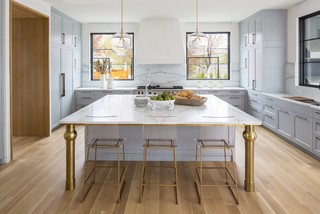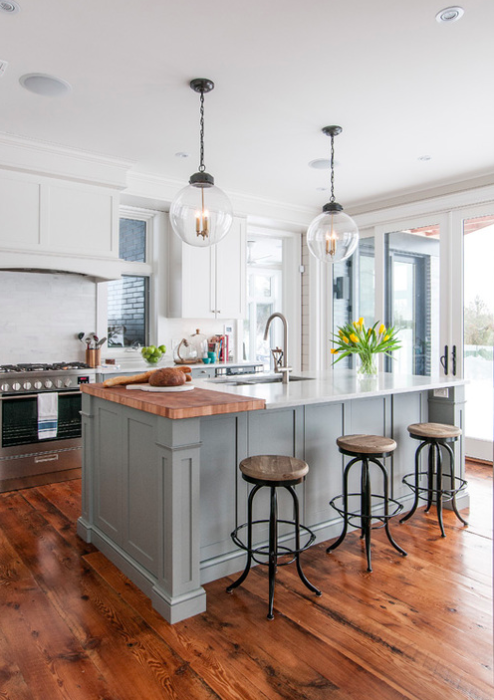Crucial Elements to Take Into Consideration When Picking Legs For Kitchen Area Island
Selecting the suitable legs for a kitchen area island involves a cautious evaluation of numerous aspects that can considerably affect both capability and visual allure. As we discover these aspects, it becomes clear that each decision can have far-reaching ramifications for the overall kitchen area experience.
Material Options
When picking legs for a kitchen island, recognizing the different product alternatives is important for achieving both visual charm and structural honesty (Legs For Kitchen Island). The option of material dramatically affects not only the toughness of the island yet likewise its overall design and functionality
Metal legs, commonly made from stainless steel or wrought iron, contribute a commercial and modern feel while making sure resilience and stability. These materials are resistant to use and can sustain substantial weight, making them suitable for larger islands.
An additional alternative is crafted products, like MDF or plywood, which can be extra affordable while still providing a variety of coatings. However, they might not offer the very same level of stability as solid wood or metal. Products such as acrylic or glass can create a modern appearance, though they may call for added support to make certain stability.
Eventually, the option of product for kitchen area island legs must straighten with the preferred capability and the overall style of the cooking area.
Design And Style

When considering design, the form and coating of the legs are important. Tapered legs can offer a sense of lightness and beauty, while thicker, extra durable legs can convey strength and security. Additionally, the surface-- be it painted, discolored, or natural-- must complement the cabinetry and counter top products to create a unified appearance.
Additionally, the style of the legs can likewise mirror individual preference. Customized or ornamental legs, such as those including detailed carvings or special geometric forms, can work as centerpieces, adding personality and personality to the cooking area. Eventually, the right option will certainly not just boost performance yet also raise the visual charm, making the kitchen island a standout feature of the home.
Height Considerations
Choosing the ideal elevation for kitchen area island legs is essential, as it directly affects both performance and comfort. The basic elevation for a kitchen area island usually ranges from 36 to 42 inches, lining up with common kitchen counter heights.

It is additionally vital to represent individuals' heights and choices. Tailoring the height can make certain a comfortable experience for all member of the family, making the kitchen island a much more delightful and functional area.
Weight Support
Guaranteeing adequate weight support for cooking area island legs is crucial for both safety and performance. The kitchen area island often serves multiple objectives, including cooking, eating, and additional storage, demanding a robust support structure. When picking legs, it is essential to consider the total weight ability called for based upon the island's planned use and the materials that will certainly be put on it.
The choice of material for the legs plays a substantial function in their weight-bearing capabilities. Strong timber, steel, and durable composites typically give premium stamina compared to lighter materials. Furthermore, the design of the legs-- whether they are straight, tapered, or have blog a pedestal kind-- can influence their ability to distribute weight properly across the framework.
Constantly get in touch with the supplier's specs regarding load restrictions to make sure that the legs can sustain the intended weight without compromising security. In summary, choosing cooking area island legs with sufficient weight assistance is necessary for producing a secure and practical culinary area.
Installation and Upkeep
Correct setup and maintenance of kitchen area island legs are important for making certain longevity and stability. This often entails safeguarding the legs to the island base making use of ideal fasteners, ensuring that the legs are level and straightened.
Once mounted, normal maintenance is essential to maintain the integrity and look of the legs - Legs For Kitchen Island. For wood legs, routine cleaning with a wet fabric and application of suitable wood gloss can protect against wetness damage and maintain their surface. Steel legs might need a mild cleansing solution to get rid of oil and grime, followed by a completely dry towel to stop rust development
Furthermore, examine the legs consistently for signs of wear or damage, such as fractures or loosened joints. Tightening screws or screws as required can additionally prolong the lifespan of the legs. By adhering to these installation and upkeep methods, home owners can make certain that their kitchen area island continues to be sturdy and visually appealing for many years to find.
Conclusion

Aesthetic comprehensibility is paramount in choosing the design and design of legs for a kitchen island, as these elements substantially influence the total atmosphere of the area. Conical legs can offer a sense of lightness and style, while thicker, much more durable legs can convey stamina and security.Choosing the suitable elevation for kitchen area island legs is crucial, as it directly impacts both functionality and comfort. In summary, selecting kitchen area island legs with adequate weight support is important for creating a practical and risk-free culinary area.
In conclusion, selecting legs for a kitchen area island requires cautious consideration of numerous elements, including product choices, style, elevation, weight support, and setup.